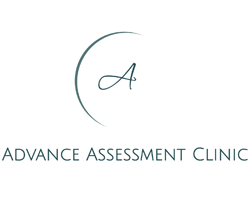- Phone: 0410 222 771
- SUBIACO WA 6008
ADVANCE ASSESSMENT CLINIC
Intellectual Giftedness
Intellectual Giftedness
“I am neither especially clever nor especially gifted. I am only very, very curious.” Albert Einstein
Parents of children who show exceptional academic achievement and appear brighter than their same-age peers may wonder if their child is “Gifted.”
Some children process information quickly and make connections that are beyond what would be expected for their age. Some children seem disengaged with learning, underachieve academically, have a fear of failure, or demonstrate disruptive classroom behaviours. These may be signs of giftedness.
Other signs include:
• advanced reading skills
• extensive and advanced vocabulary
• completes work quickly
• low motivation to engage in work
• acquires information quickly
• makes connections between information quickly
• highly creative
• strong sense of ethics and values
• significant talents in one area
• significant attention to areas of interest
• displays inattention or behavioural regulation due to boredom
There is no standard definition of “giftedness”, however, researchers recognise that giftedness is a broad concept that covers a range of abilities. With regard to intellectual functioning, there is some consensus that an IQ score of 130 or above constitutes giftedness. This corresponds to the top 2% of scores in any given population, or two “standard deviations” above the average. However, it is important to go beyond the IQ score to explore a child’s unique gifts and talents and any emotional challenges that may accompany these.
Schools often require the results of a cognitive assessment (IQ) and functional or educational assessment (reading, writing, spelling, mathematics) to identify giftedness and the appropriateness of curriculum adjustment or inclusion in acceleration or enrichment programs.
“Gifted and talented students are entitled to rigorous, relevant and engaging learning opportunities drawn from the Australian Curriculum and aligned with their individual learning needs, strengths, interests and goals.” (Australian Curriculum, Assessment and Reporting Authority – ACARA).
Twice Exceptional (2e)
A person who is twice exceptional, alongside being considered intellectually gifted, is formally diagnosed with one or more disabilities.
The disabilities are varied, though may include Specific Learning Disorder (dyslexia, dysgraphia, dyscalculia), visual or auditory processing disorder, Autism Spectrum Disorder, ADHD or any other disability interfering with their ability to learn effectively in a traditional environment including anxiety and depression.
Twice exceptional cognitive functioning is often referred to as “splintered” or “spiky” with extreme areas of both strengths and weaknesses. Students are often all over the place in terms of year level ability or age-appropriate development. For example, understanding mathematical concepts at a Year 7 level, having deep conversations with adults, writing at a Year 3 level and having emotional outbursts like a young child. Students may also score very highly in their verbal abilities (98th percentile) and very low for processing speed (2nd percentile). These discrepancies lead to a lot of misunderstanding and cause considerable stress for students, families and teachers alike. It is important for parents and teachers to identify their 2e children and students because a failure to understand them can be damaging. When 2e is not recognised, gifted students are often labelled as “lazy”, “not trying hard enough” or “unmotivated” rather than noticing how the disability affects the student.
2e students are complex and a generic school curriculum won’t meet the diverse needs of these learners. Identifying a student’s gifts and challenges ensures that learning experiences can be designed that are appropriately challenging and supportive.
